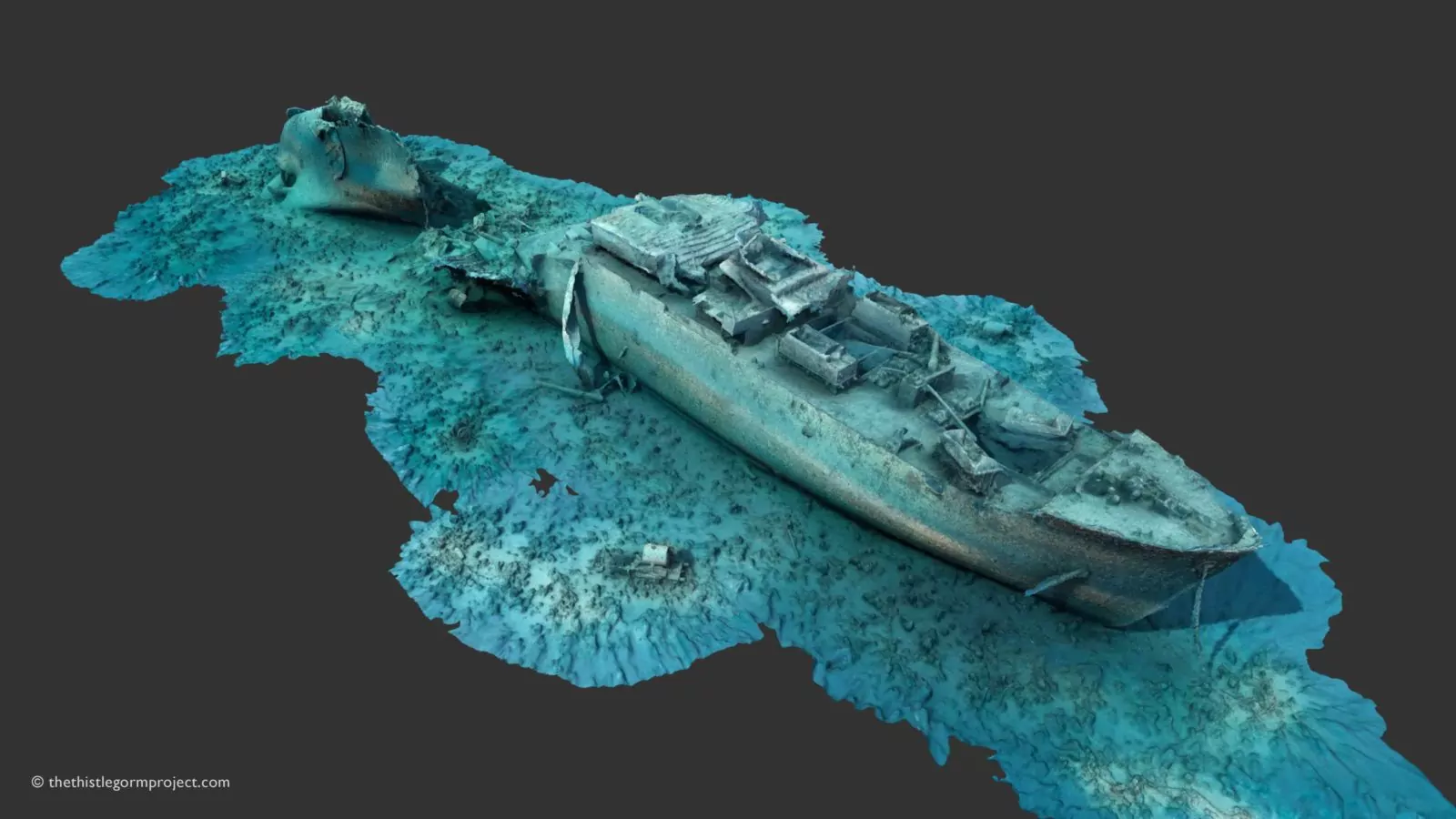For diving enthusiasts, underwater photographers or anyone with a keen interest in World War II, Diving the Thistlegorm: The Ultimate Guide to a World War II Shipwreck by Simon Brown is a worth a read. This captivating and comprehensive guide delves into the history, exploration and legacy of the Thistlegorm wreck, a World War II merchant ship that was sunk during the second world war and now lies as a fascinating underwater time capsule off the coast of Egypt’s Sinai Peninsula.
This book is not only an excellent resource for divers who wish to explore the wreck but also for those interested in the historical significance of the ship and the military vehicles and machinery it carried. Brown’s meticulous research, photography and first-hand accounts make this book a detailed and accessible guide to understanding the shipwreck, the artifacts it holds and the ongoing efforts to preserve and document it.
A Glimpse into the History of the Thistlegorm
The Thistlegorm was a British merchant vessel that was part of a convoy transporting essential supplies to Allied forces in North Africa during World War II. The ship was carrying a cargo of military equipment, including trains, trucks and motorcycles, when it was bombed by German aircraft in October 1941. Following a catastrophic explosion, it sank to the bottom of the Red Sea, where it would remain largely undisturbed for decades until its story was told by world-renowned explorer and filmmaker Jacques Cousteau. Cousteau’s involvement in the exploration of the Thistlegorm brought global awareness to the wreck’s significance and helped cement its place as one of the most famous wreck dives in the world.
Historical Significance and WWII Relics
What sets the Thistlegorm apart from other wrecks is its cargo. The ship carried essential materials for the Allied war effort, including military vehicles and machinery that were vital for the North African campaign. The wreck of the Thistlegorm has become a living museum, with trains, trucks, motorcycles, shells, guns, trailers, signalling equipment and mundane supplies (beds and buckets), from the era still largely intact and scattered throughout the wreck. These relics offer a unique, tangible connection to the soldiers and sailors who fought during WWII, and they provide invaluable insight into the technologies and strategies employed during the war.
One of the most remarkable aspects of the Thistlegorm wreck is how well its cargo has been preserved. The shipwreck, untouched for decades, still holds much of the equipment it was transporting. Much of the cargo is still in the order of how it was stacked for transport, with motorbikes still stacked on the flatbed trucks and shell cases neatly packed against the hold walls. Of course much of the cargo was strewn across the seabed as 2 of the holds were ripped open by a powerful explosion as the bombing raid exploded the munition cargo being transported. The debris field suggests there is more to find around the wreck site.

Advanced Technologies: 3D Models and CAD Drawings
One of the most exciting aspects of Diving the Thistlegorm is the way it explores the use of cutting-edge technologies to document the wreck. Through the use of photogrammetry and 3D modeling, divers and archaeologists can now understand the wreck in incredible detail, even without visiting the site in person. The team used these technologies to capture high-resolution images and video of the wreck and then use the images to create detailed 3D models of the ship, its cargo and the surrounding environment.
The photogrammetry process involves taking thousands of photos from different angles and then using advanced software to stitch them together into a 3D model. This technique allows divers and researchers to explore the wreck remotely, examining its structure, identifying specific artifacts and understanding the relationships between various components of the ship. It also provides a way to track the condition of the wreck over time, ensuring that it is preserved for future generations.
The CAD drawings included in the book further enhance this understanding of the wreck. These drawings offer detailed, scaled representations of the ship and its cargo, making it easier for divers to navigate the site and to study the ship’s design.
The detailed models provide a digital record of the wreck that can be used for preservation efforts, historical research and public education. The use of this technology is not just groundbreaking for the Thistlegorm, but it sets a new standard for how wrecks and underwater sites should be studied in the future.
The Thistlegorm Project: Preserving History
As detailed on The Thistlegorm Project, the efforts to document and preserve the Thistlegorm wreck are ongoing, and the use of photogrammetry and 3D modeling plays a crucial role in these efforts. The project’s goal is to create a permanent digital archive of the wreck, which can be used by divers, historians and researchers around the world. This archive will also help protect the wreck from potential damage, ensuring that future generations will be able to explore and study it in the same way we do today.
We were lucky enough to have Simon give a guest talk at our research day, providing even more context and detail to the process of collecting the data for the project and how discoveries amongst the wreckage were made. Get yourself a copy of the book, you won’t be disappointed.
